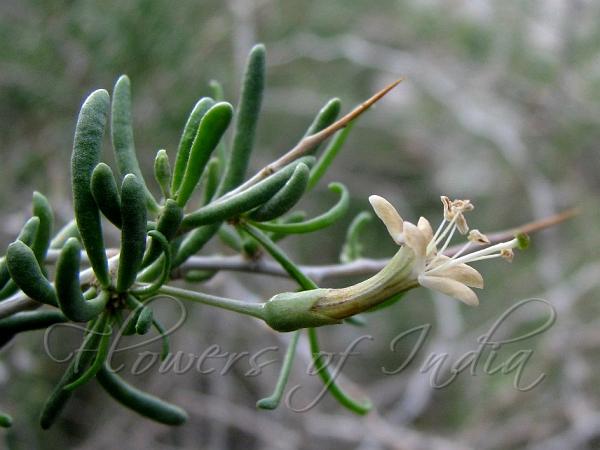|
| Russian Box Thorn |
|

|

| File size | 101495 |
| Original date | 9/18/11 7:54 AM |
| Resolution | 944 x 708 |
| Flash | Flash did not fire, auto |
| Focal length | 6.0mm |
| Exposure time | 1/250s |
| Aperture | 3.2 |
| Focus Distance | |
| Metering Mode | Center weighted average |
| Camera make | Canon |
| Camera model | Canon PowerShot S5 IS |
| Sensor type | OneChipColorArea |
|
|
|
|
Photo: |
Botanical name: Lycium ruthenicum Family: Solanaceae (Potato family)
Russian Box Thorn is a spiny shrub up to 1.8 m
tall. Shoots are greyish to white, hairless. Leaves are 0.6-2.5 cm
long, 1-1.5 mm broad, linear to spoon-shaped, fasciculate, cylindrical,
blunt-tipped. Spines are up to 1 cm long. Flowers are borne in leaves
axils, solitary or paired. Flower-stalks are 3-4 mm long, up to 7 mm in
fruit, slender. Sepal-cup is 2.5-3.5 mm long, bell-shaped to broad
tubular, shallow. Sepals are about 1 mm long, blunt or pointed, often
minutely ciliolate. Flowers are funnel-shaped, tube 5-7 mm long, petals
about 1/3 the tube size, blunt, throat pubescent. Stamens are somewhat
protruding, filaments slender. Berry is spherical, 5-8 mm broad, black.
Seeds are kidney-shaped, about 2 mm long, brown.
It can be seen growing wild along roadsides and saline deserts and
sands at altitudes ranging from 400-3000 m in Afghanistan, Kazakhstan,
Kyrgyzstan, Mongolia, Pakistan, Russia, Tajikistan, Turkmenistan,
Uzbekistan, SW Asia and in some parts of Europe. In India, it grows
at high altitude areas of Kashmir. Flowering: June-August.
Medicinal uses:  The plant is used as an ointment to treat blindness in camels. The
fruit of many members of this genus is a very rich source of vitamins
and minerals, especially in vitamins A, C and E, flavanoids and other
bio-active compounds. It is also a fairly good source of essential
fatty acids, which is fairly unusual for a fruit. It is being
investigated as a food that is capable of reducing the incidence of
cancer and also as a means of halting or reversing the growth of
cancers.
The plant is used as an ointment to treat blindness in camels. The
fruit of many members of this genus is a very rich source of vitamins
and minerals, especially in vitamins A, C and E, flavanoids and other
bio-active compounds. It is also a fairly good source of essential
fatty acids, which is fairly unusual for a fruit. It is being
investigated as a food that is capable of reducing the incidence of
cancer and also as a means of halting or reversing the growth of
cancers.
 The plant is used as an ointment to treat blindness in camels. The
fruit of many members of this genus is a very rich source of vitamins
and minerals, especially in vitamins A, C and E, flavanoids and other
bio-active compounds. It is also a fairly good source of essential
fatty acids, which is fairly unusual for a fruit. It is being
investigated as a food that is capable of reducing the incidence of
cancer and also as a means of halting or reversing the growth of
cancers.
The plant is used as an ointment to treat blindness in camels. The
fruit of many members of this genus is a very rich source of vitamins
and minerals, especially in vitamins A, C and E, flavanoids and other
bio-active compounds. It is also a fairly good source of essential
fatty acids, which is fairly unusual for a fruit. It is being
investigated as a food that is capable of reducing the incidence of
cancer and also as a means of halting or reversing the growth of
cancers. Identification credit: Gurcharan Singh
| Photographed in Nubra Valley, Ladakh. |